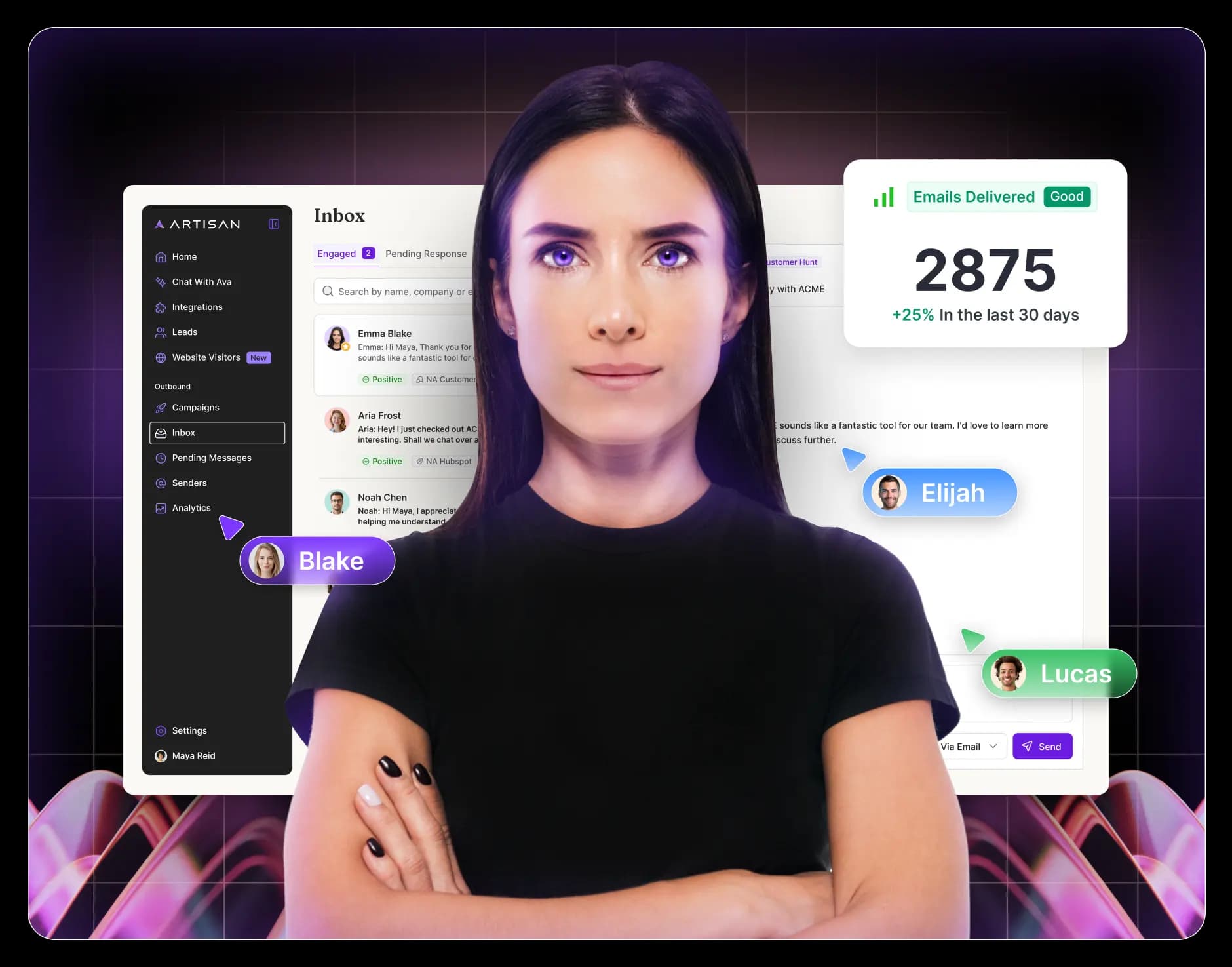With artificial intelligence making waves across every corner of the business world, it’s okay to wonder how it can impact your performance before jumping on the bandwagon.
Is AI just a passing fad, or does it truly address the challenges sales teams face—the real, day-to-day struggles?
Can it help you manage overwhelming data, align better with your marketing team, or create deeper connections with prospects beyond impersonal cold emails?
Yes, it can—but you don’t have to just take our word for it.
Below, we’ve outlined key use cases and data points demonstrating how AI already impacts sales enablement.
What is Artificial Intelligence in Sales Enablement?
AI in sales enablement augments sales teams with advanced tools and insights that improve existing processes and bring entirely new capabilities to the table.
When we talk about process improvements, we're referring to automating routine tasks like lead prioritization or performance trend analysis. And by new capabilities, we mean things like AI-driven sales coaching—technologies that feel straight out of 2050. The latter are made possible through Natural Language Processing (NLP), which enables AI to understand and generate human language in a way that supports real-time, context-aware interactions and personalized feedback.
All of these help to boost sales performance and improve customer experience through greater efficiency, precision, and personalization.
Ready to get to the specifics? Let’s move forward.
How AI-Powered Sales Enablement Helps Close More Deals
AI tools are already an important part of day-to-day roles for 52% of sales professionals. Here are the advantages that these AI-powered teams are already experiencing:
1. Higher Lead Quality

Only 12% of companies can boast most or all of their account executives (AEs) hit their sales quota. The issue stems from several factors, with the most common problem rooting at the very top of the sales funnel: poor lead quality or insufficient lead volume from SDRs.
Manual prospecting, as you’re aware, is slow and labor-intensive. In fact, 66% of sellers report spending more than an hour researching each new prospect. SDRs face a tough choice, often without realizing it: they should either sacrifice lead quality to meet quota targets or reduce lead volume to improve conversion rates.
AI solves the dilemma by taking on up to 80% of the outbound demand generation process for SDR teams. Here’s what it does:
Learns and understands your ideal customer profiles (ICPs);
Uses this knowledge to search its database, which pulls information from various online sources;
Identifies leads that closely match your ICPs by analyzing signals like social media activity and recent interactions;
Provides SDRs with a curated list of highly qualified leads, complete with their contact details.
And just like that, the process that would have taken hours is completed while a human SDR is busy with more important tasks.
AI-powered prospecting in action: AI SDRs are more and more common as assistants in sales enablement. Ava is one of those.
Ava is an AI sales agent that takes over the most time-consuming tasks of outbound sales, including prospecting leads, enriching them, verifying their contact information, researching them, and writing outbound emails.
Simply provide Ava with details about your ICP and offering, and she’ll automatically create and launch an outbound campaign for you.
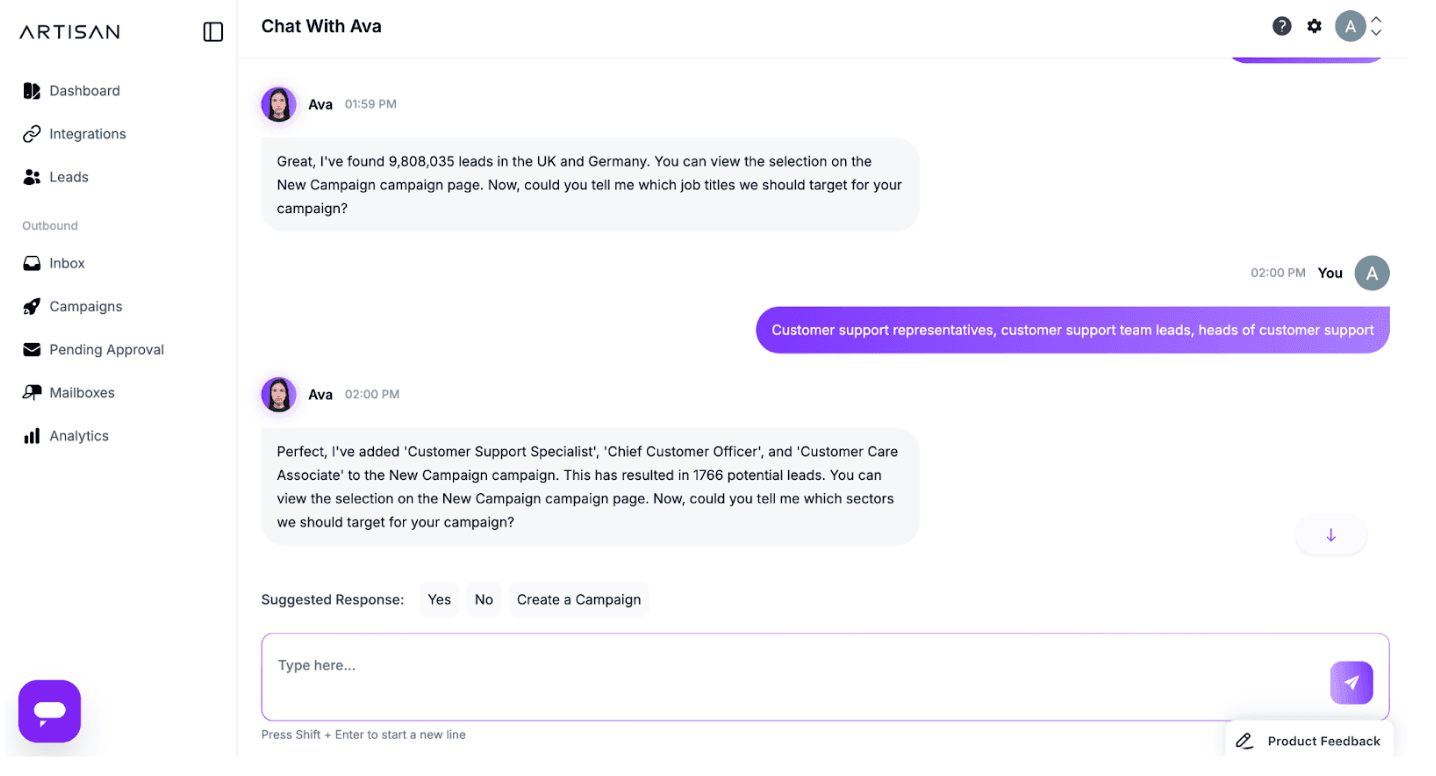
Fill your pipeline with highly qualified leads with Ava, and finally hit your sales quota. Empower your team with an AI SDR today.
2. Enhanced Personalization
Seven out of 10 companies say they’re already using AI to personalize content and marketing.
Exactly, simply adding a customer’s name or company to an email won’t cut it anymore. AI has leveled up personalization—it analyzes loads of data to tailor sales content to each individual prospect. For sales reps already using it, this means not only saving hours of work but also delivering a much better customer experience.
Generative AI is now embedded in most sales systems, so you've likely already played with the AI-powered email writing functionality of your CRM system or an AI writing assistant. However, most of these still just churn out generic email copy, lacking the ability to process and use lead data to create personalized content.
So what’s true AI-powered personalization? It includes:
Data-based email personalization: AI should pull data from various sources—like social media, past interactions, etc.—to craft emails that speak directly to each lead’s unique needs and interests. This isn’t just about tweaking subject lines; it’s about creating entire messages that align with customer needs and pain points.
Sales playbooks: Sales reps should be able to guide their AI assistant to follow their strategy in both research and messaging. The playbooks will tell the AI what information to look for, the tone to use in communication, and any unique aspects of your brand to incorporate.
Ongoing optimization: Machine learning (ML)-driven AI systems are capable of continuously learning from data, refining their performance over time. Your AI-powered sales enablement assistant should be able to analyze response patterns and sales data to adjust its messaging strategies, send times, and targeting to achieve better results with each campaign.
… and yes, you can find all of these in Ava.
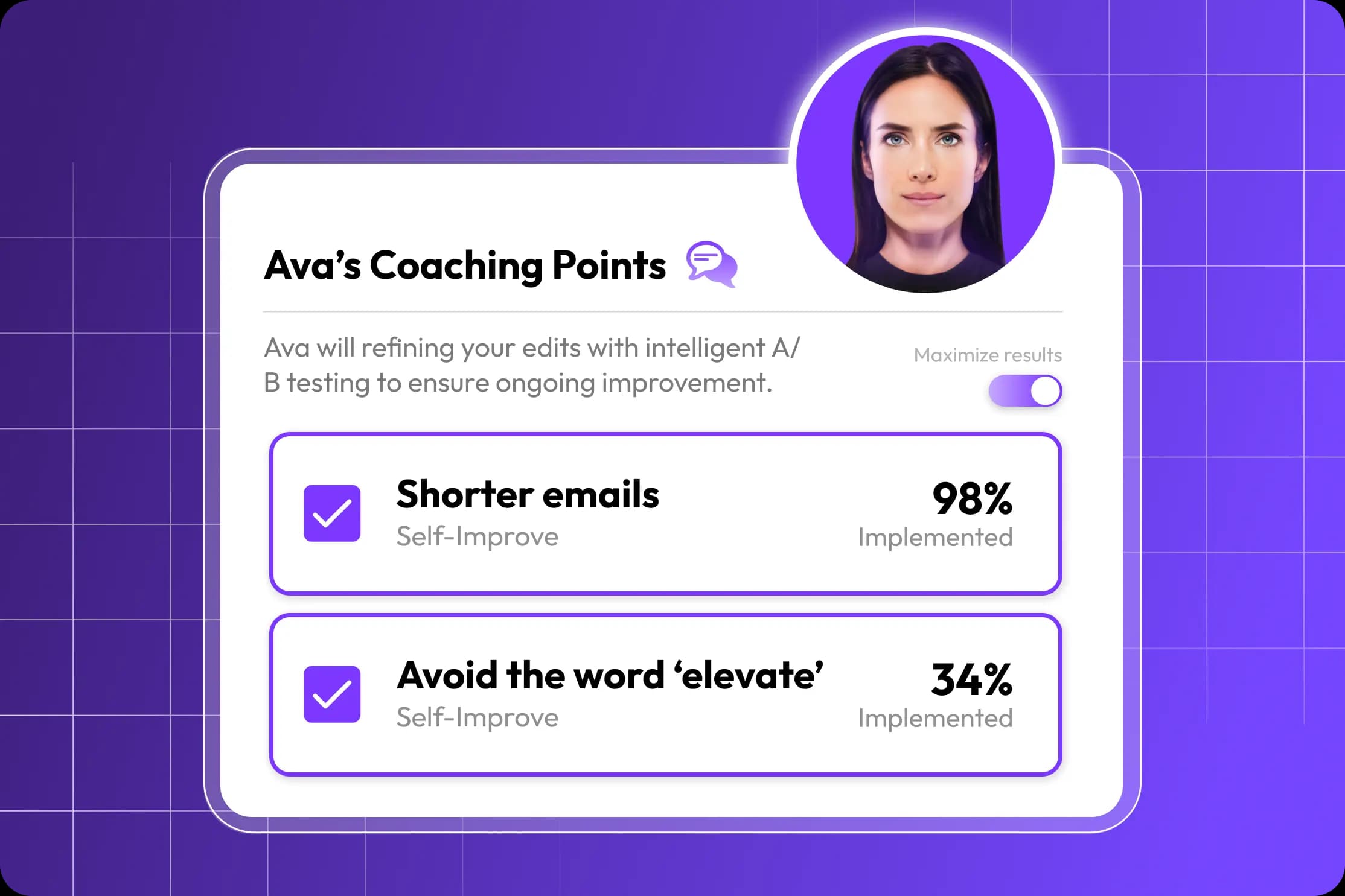
3. Improved Lead Scoring and Qualification
It’s no secret that how fast and how well you can determine the quality of a lead directly impacts your ability to close deals and hit your sales targets. The faster and more accurately you do it, the better positioned you are to focus your energy on the prospects that are most likely to close.
AI accelerates this process by automating it, but it doesn’t stop there. It also improves the accuracy of lead scoring by analyzing far more data than a human ever could—92% of salespeople who have already implemented AI for lead qualification are happy with the outcomes.
Moreover, AI’s ability to continuously learn and improve over time means that your lead-scoring models will become increasingly accurate with every campaign. For example, if AI notices that leads with certain characteristics are consistently closing deals, it will adjust the scoring model to prioritize these traits.
4. Automated Outreach and Follow-Ups
Too many SDRs and sales reps spend countless hours researching and qualifying leads, only to fail to stay on top of their outreach campaigns.
Aside from slowing down your sales cycle, delayed follow-ups and inconsistent messaging hardly help to create a positive customer experience. These issues aren’t just frustrating, they actually reduce your chances of closing deals.
Yes, basic automation tools let you schedule sales campaigns and follow-ups, which you have hopefully adopted long ago. However, AI brings new capabilities to the table, such as:
AI-driven sender reputation warmup;
Fully automated email sequences;
Send time and frequency optimization;
Real-time strategy adjustment, and more.
For instance, Ava refines the key aspects of outbound sales outreach by:
Warming up your email address before sending cold outreach messages;
Firing follow-up sequences based on customer engagement with emails;
Modifying outreach strategies (a.k.a. playbooks) and writing style in real-time;
Optimizing email timing and frequency for each lead.

5. Streamlined Worfklows and Higher Efficiency
Aside from customer interactions and direct sales activities, many behind-the-scenes tasks consume hours of your team’s time. Tasks such as data entry, appointment scheduling, and performance analysis are just the tip of the iceberg known as manual activities killing your sales productivity.
The good news is that AI technology is already helping sales professionals save around 2 hours and 15 minutes each day by automating these repetitive tasks.
But that’s on the surface. Another significant, and less obvious, benefit of AI is its ability to identify sales bottlenecks and provide targeted recommendations for improvement.
Here’s what we’re talking about.
One hundred and twenty days—that’s the average sales cycle length for companies with respective revenue ranging from $1M to $1B. At the same time, 28% of sales pros say the sales process taking too long is the biggest reason prospects back out of deals. It looks like fixing the inefficiencies in the sales cycle can improve close rates for at least ⅓ of sales organizations—and it’s more attainable than ever with AI’s assistance.
AI-driven pipeline management tools like Pipedrive proactively remind sales reps of key opportunities, spot anomalies in team performance, suggest the best deals to focus on, and trigger alerts if a deal is taking too long.
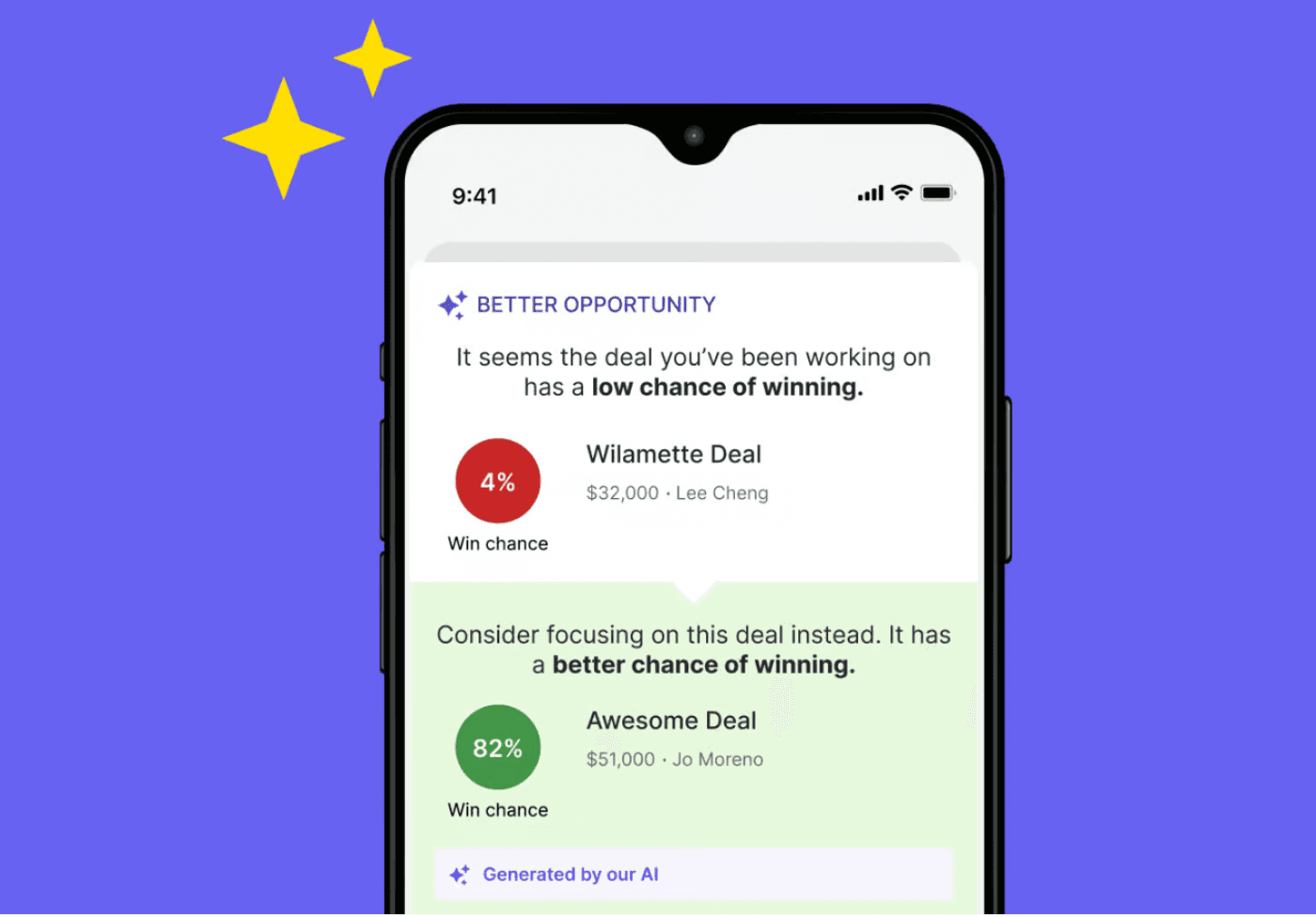
6. More Accurate Forecasting And Resource Allocation
Around 65% of sales teams are either already using or considering investing in AI-powered analytics software in the near future. Perhaps they just want to jump on the bandwagon? Not really…
Seventy-three percent of sales professionals who use AI agree that it helps them pull insights from data they otherwise wouldn't be able to find. This means that AI doesn’t just speed up data processing—it reveals a whole new layer of insights that manual analysis misses.
From identifying sales trends and patterns to predictive analytics, AI-powered revenue insight software gives you all you need to allocate your resources smarter and achieve better results.
With AI-driven forecasts, Piano, a SaaS company, has saved approximately five hours per week and achieved 90% greater sales forecasting accuracy. The AI-powered system captures every customer interaction from CRM data, analyzes behavior from various sources like Salesforce, email, and calendars, and instantly provides actionable insights into the deal likelihood and risks. With the new workflow in place, sales reps have been able to shift their focus from data collection and analysis to actually increasing win rates.
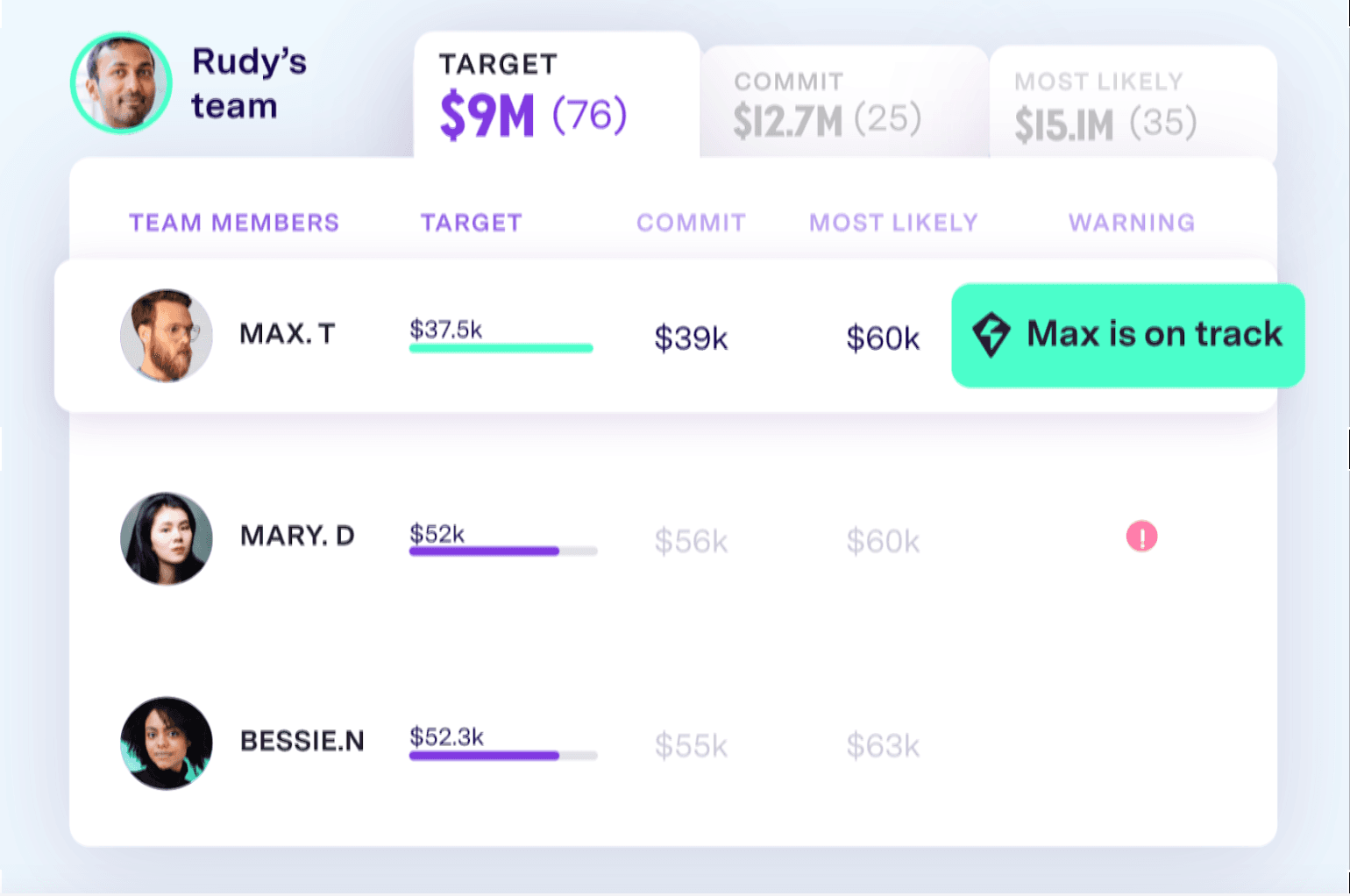
7. Personalized Training For Salespeople
Seventy-seven percent of sales professionals agree that personalized training is key to better sales rates and improved overall performance.
You understand that tailored training is critical, but it doesn’t look like you’ll have the resources to offer individualized onboarding and training programs to each team member any time soon.
The solution? AI-driven training.
Modern CRM systems, sales call management tools, and performance analytics software now integrate AI coaching capabilities to some extent. For example, HubSpot’s conversation intelligence and Salesforce’s Einstein offer detailed AI insights into each rep’s performance, enabling managers to better tailor their coaching strategies.
There’s also dedicated AI-powered sales role-play software that’s rapidly gaining traction in the market. These tools help onboard and upskill salespeople through AI-driven simulations. For example, giants like Zoom have already adopted AI role-play to upskill their sales reps and introduce new messaging at scale.

8. Improved Sales Call Performance
Hosting and managing sales calls is one of the top struggles for sales staff.
Guess what? AI handles that, too.
With AI tools like Avoma and Gong, reps can put aside hastily scribbled notes. They get instant access to key prospect details, real-time insights into conversation points, and recommendations for handling objections. Sales managers also benefit—AI transcribes and summarizes calls, making it easier to provide feedback without having to listen to every call.
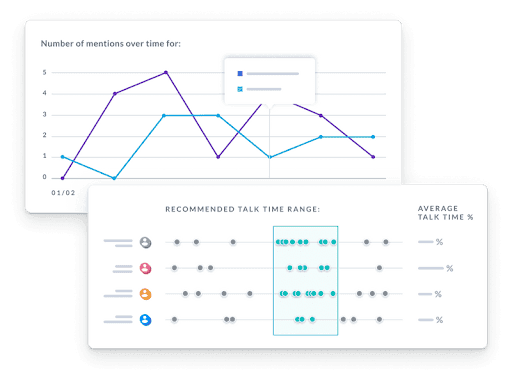
9. Scalable Operations
Eighty-five percent of sales leaders are struggling to get the budget for the needed headcount.
It's almost a cliché—a sales enablement team stretched thin. The good news? Scaling your sales efforts doesn’t necessarily require adding more people. What you need is better operations, and you’ve just seen how AI can enhance these in every aspect.
If Ava alone automates 80% of the outbound sales process, think of how much time your SDRs will gain to connect with more leads using more effective strategies. Similarly, AI-powered data analysis and actionable insights streamline other processes, saving every team member hours each day.
Suddenly, you realize that you don’t need a larger team—you just need smarter processes to drive your growth.
10. Competitive Advantage
More than half of sales professionals say that reaching or exceeding their targets has become increasingly difficult, primarily due to stiff competition.
As you work hard to attract and convert leads, your competitors are doing the same. To stay ahead, you need to use every advantage, including AI-powered tools, to set yourself apart from the competition.
While your competition is bogged down with manual tasks and sending out generic messaging, you can do better. Use AI for all of the above and win those leads not through sheer size, but through agility and adaptability.
Top 3 AI Sales Enablement Tools
Now, let’s take a look at the tools that will help you put these into action.
Artisan
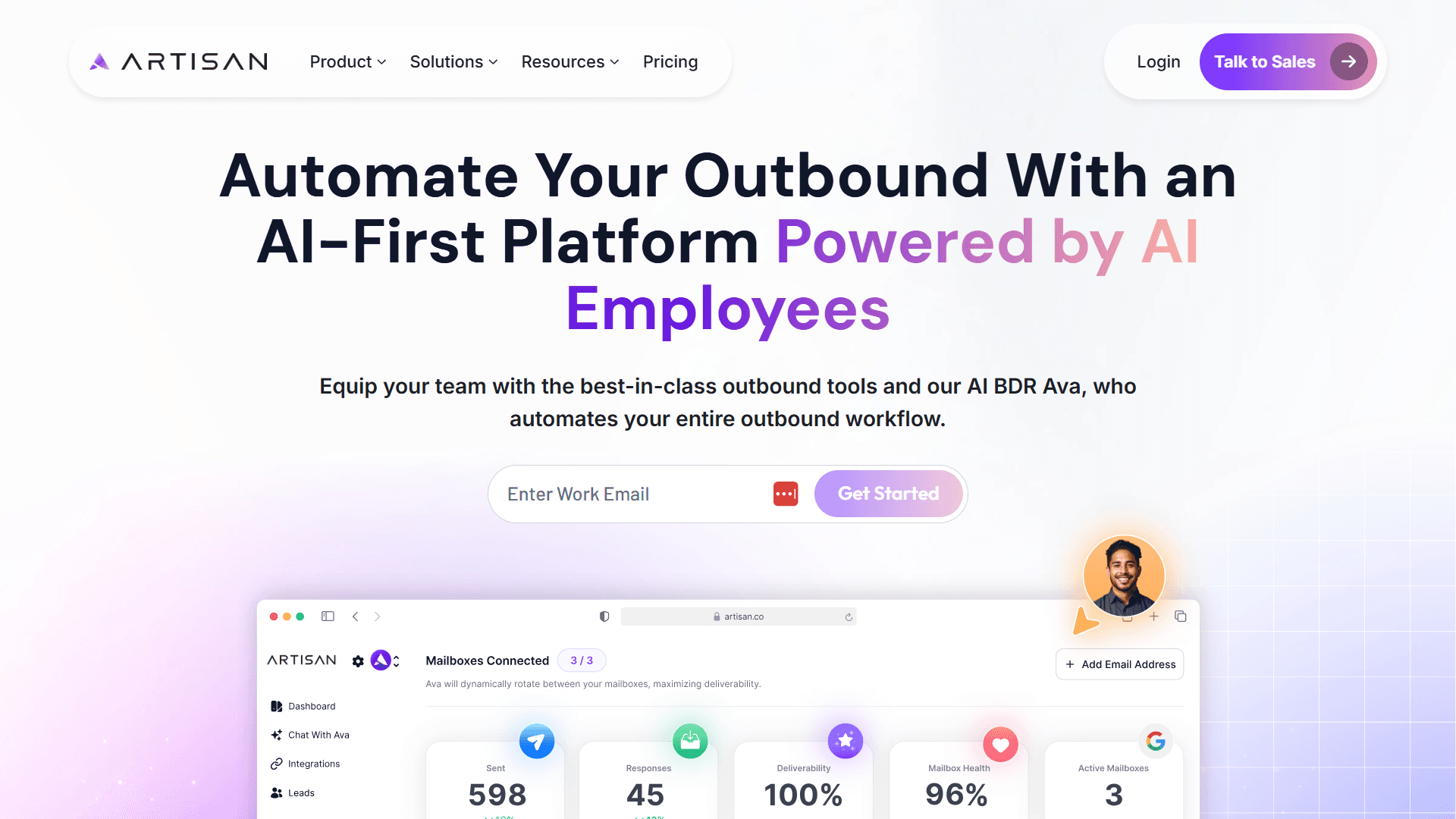
Artisan is an AI-powered outbound sales automation platform for B2B companies. At the heart of Artisan’s solution is Ava, an AI SDR that takes over the most time-consuming tasks of prospecting and cold outreach.
Ava augments your sales team, saving them time to handle high-priority activities.
Key features
Database of 300M B2B leads
Lead discovery and research
Lead enrichment
Conversational intelligence
Email writing
Automated follow-ups
Sales playbooks
Automated email warmup and deliverability optimization
Response rate optimization
CRM integration
Propel your sales enablement with Ava. Hire her to hand over the boring and repetitive tasks of outbound sales and spend more time selling.
CoPilot AI

CoPilot AI is a virtual sales assistant for LinkedIn prospecting. It helps scale your LinkedIn sales strategy by automating tasks like lead prioritization, email writing, and meeting scheduling.
Key features
Intent analysis
Personalized messages
Automated LinkedIn message sequences
Meeting scheduling
Team collaboration
CRM integration
Otter.ai
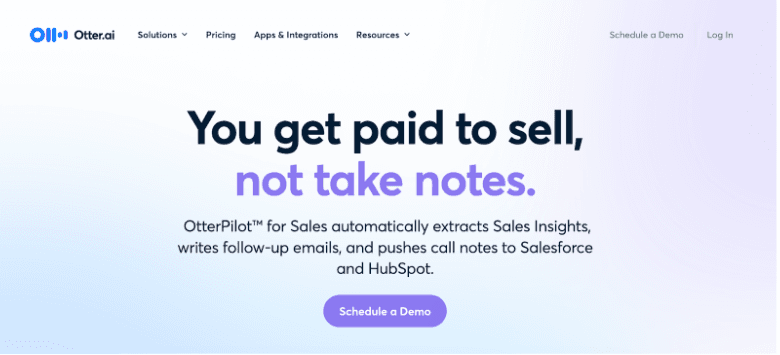
Otter.ai is an AI meeting assistant for sales reps. The tool transcribes meetings in real time, summarizes them, extracts action items, and pushes call notes directly to Salesforce and HubSpot.
Key features
Call recording
Real-time transcription and summaries
Automated note-taking
Sales insights
Follow-ups
CRM integration
Where Should You Start?
Unfortunately, there isn’t a single AI sales enablement platform that covers every use case. At least, not yet.
To fully leverage AI in your sales enablement process, you'll need to use several AI-driven platforms. We recommend starting with a virtual assistant like Ava to enhance your outbound workflows—this is where the journey begins.

Try Ava to start filling your pipeline with high-quality, ready-to-buy leads.

